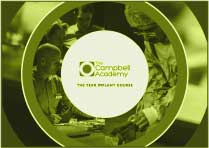.png?width=1627&height=517&name=Full%20TCA%20Logo%20(Purple).png)
They used to call is experience.
Now it seems that they always call it intellectual property.
It’s knowing how to do something that nobody else can do (or very few people can do).
It’s what gives you the competitive and commercial edge.
Let me give you a couple of examples from my workplace:
- CBCT scans
You take an elaborate x-ray of a patient which gives us a 3D image which you can then look at to diagnose and plan the work that you do.
Pretty much anyone can take the x-ray.
There is no value in the x-ray taking (or extremely little value) the value is in looking at the x-ray and communicating what you see. Predictably though in the hype of the CBCT taking in dentistry there was a race to the bottom. Where cheap machines came out and people started battling against each other to provide cheap CBCT’s in their practice to try and pay back the 10’s of thousands of pounds they’d paid on a machine. The market pretty much settled in £99 for a CBCT, which is where it is now.
We decided to charge nothing for a CBCT but to charge a lot of money for the looking at the CBCT, we don’t let a CBCT go out the practice without looking at it. We trained to look at CBCT’s with Michael Bornstein and then we looked at CBCT’s thousands of times. We talked about them all the time, we reflected, we learned from any mistakes that we made and then we retrained with Bornstein again. We then all trained in different places and then we talked about that training and compared notes. So, the ability, experience and intellectual property that we have at looking at scans is valuable and worth it.
You can get a scan from the £99 guy, but he won’t tell you what is on it. He will send the scan to somebody else to tell you what is on it. That would be a sterile and medical report which will not help you in decision making about what you’re going to do with the scan now you have it. It will not guide you.
- Digital laboratory set up
I went into the laboratory today and Mark had set up four surgical guides to be printed in the 3D printer. He had set them up in the digital SLT file flat but explained to me that if he decided to print more at once he could just stand them on the end. He figured out just by looking at it for a bit of fun today that we could probably print 20 at a time on one print run.
We can plan for 2 weeks and print for 1 morning, and they would all be printed. Obviously, there is a cost at buying the machine and a little bit of cost in the materials involved, but much less cost in materials if you print 20 at a time.
We know how to do this, and we also know how to print jaws from CBCT’s so that we can have a jaw in our hand before surgery for a case that is difficult. We can even do trial surgeries on jaws to see where the difficulties might lie.
It’s not about whether it’s possible or not it’s about whether you know how to do it. Printing will get cheaper and cheaper and you will be able to get someone to print your stuff for almost nothing, but will they give you the expertise, the insight and the advice to make it better and to use it properly.
Value is in the information not the action.
Blog post number: 1662





Leave a comment